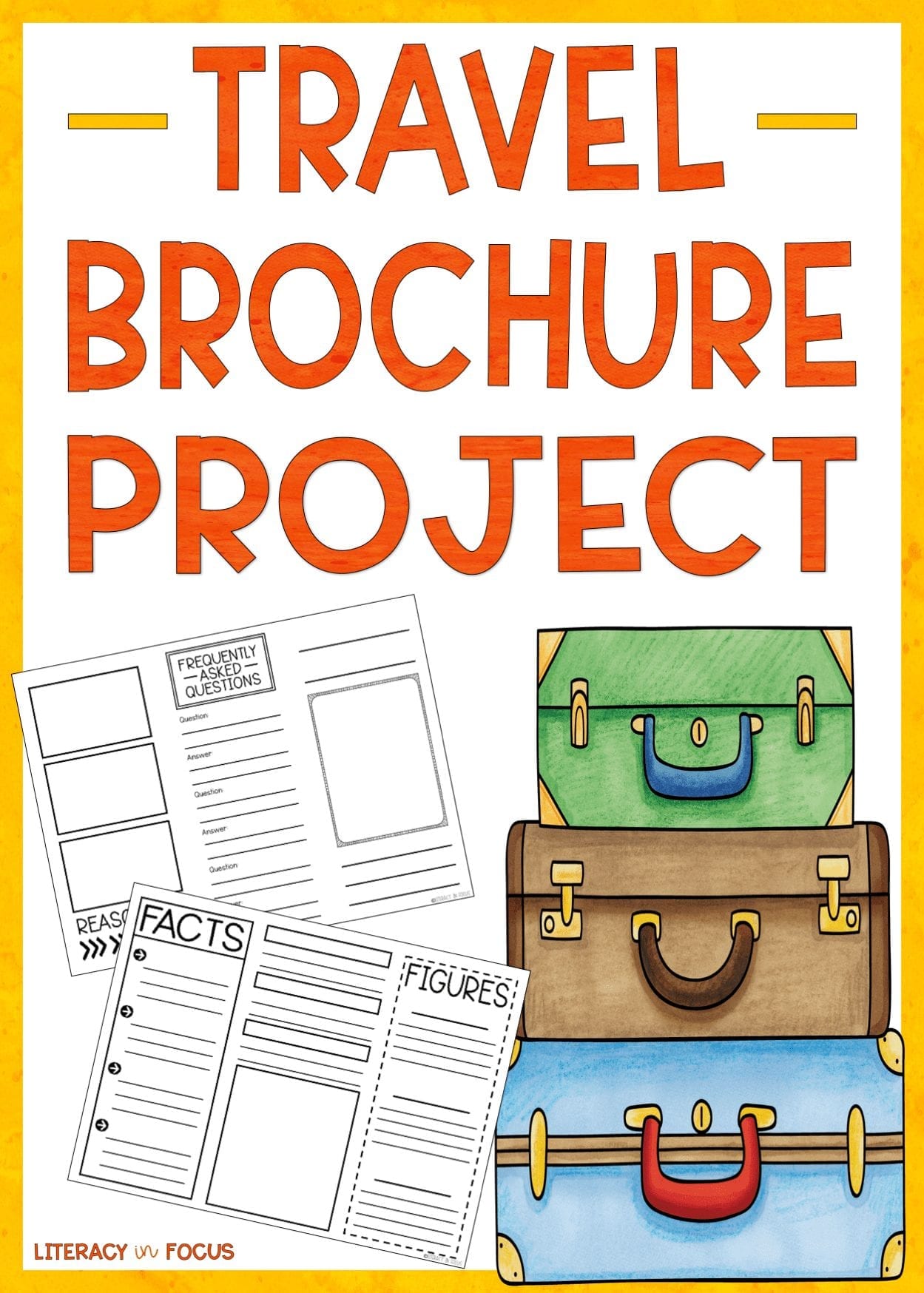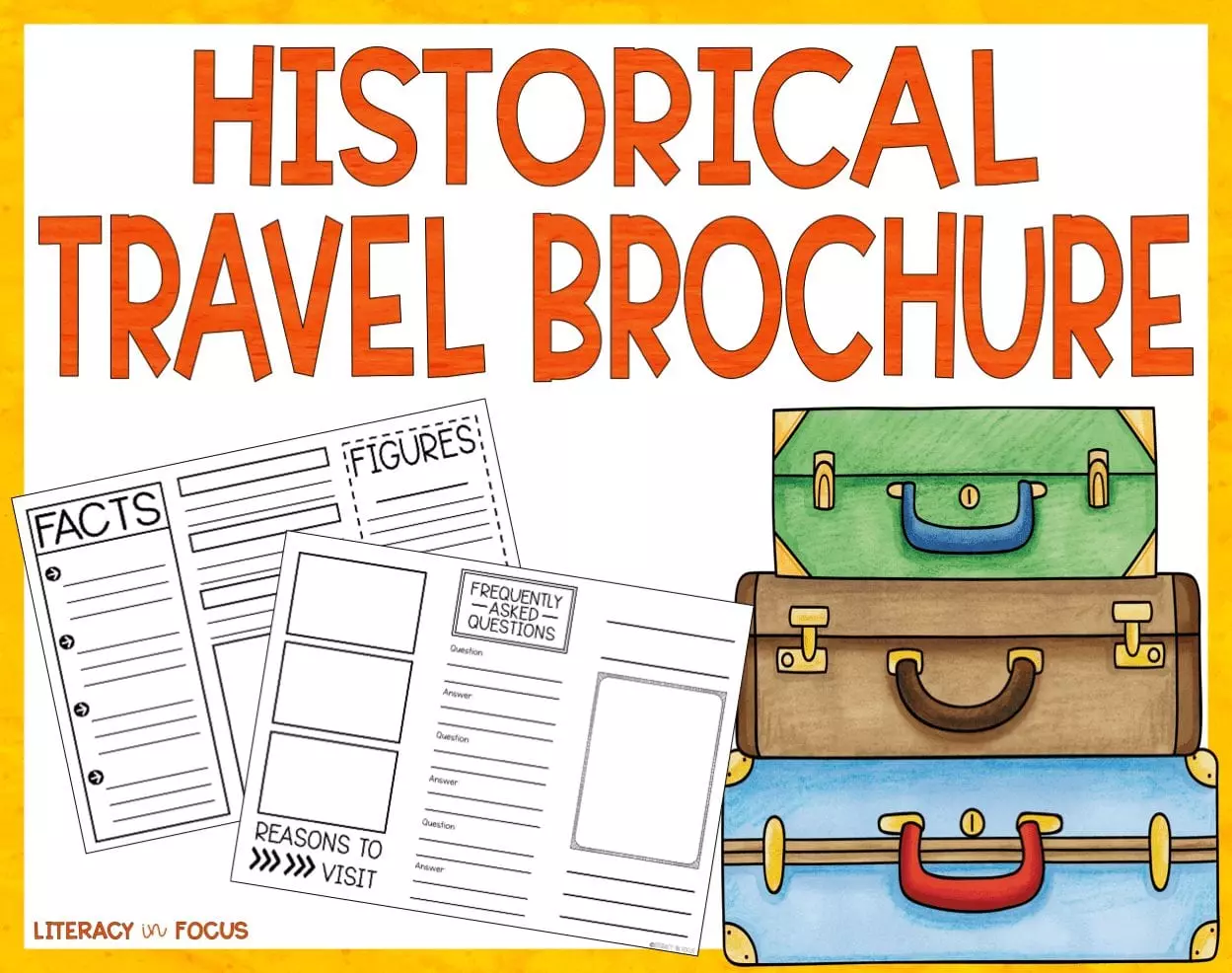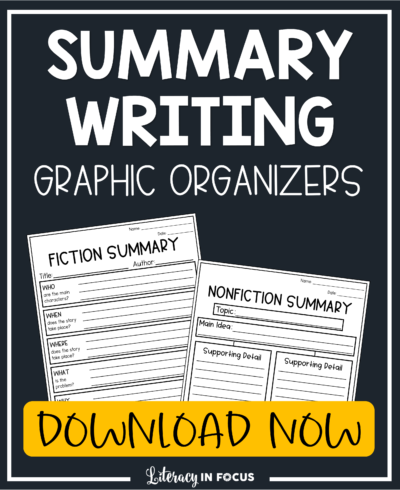It’s not always easy to marry research skills and creativity, which is why I absolutely love the historical travel brochure project. Students are able to demonstrate their ability to interpret, analyze, and synthesize historical data while creating a unique travel brochure that highlights the unit of study. The historical travel brochure can be divided into six sections, or panels. Each section represents a different aspect of the historical location. Each panel of the historical travel brochure is described in detail below.
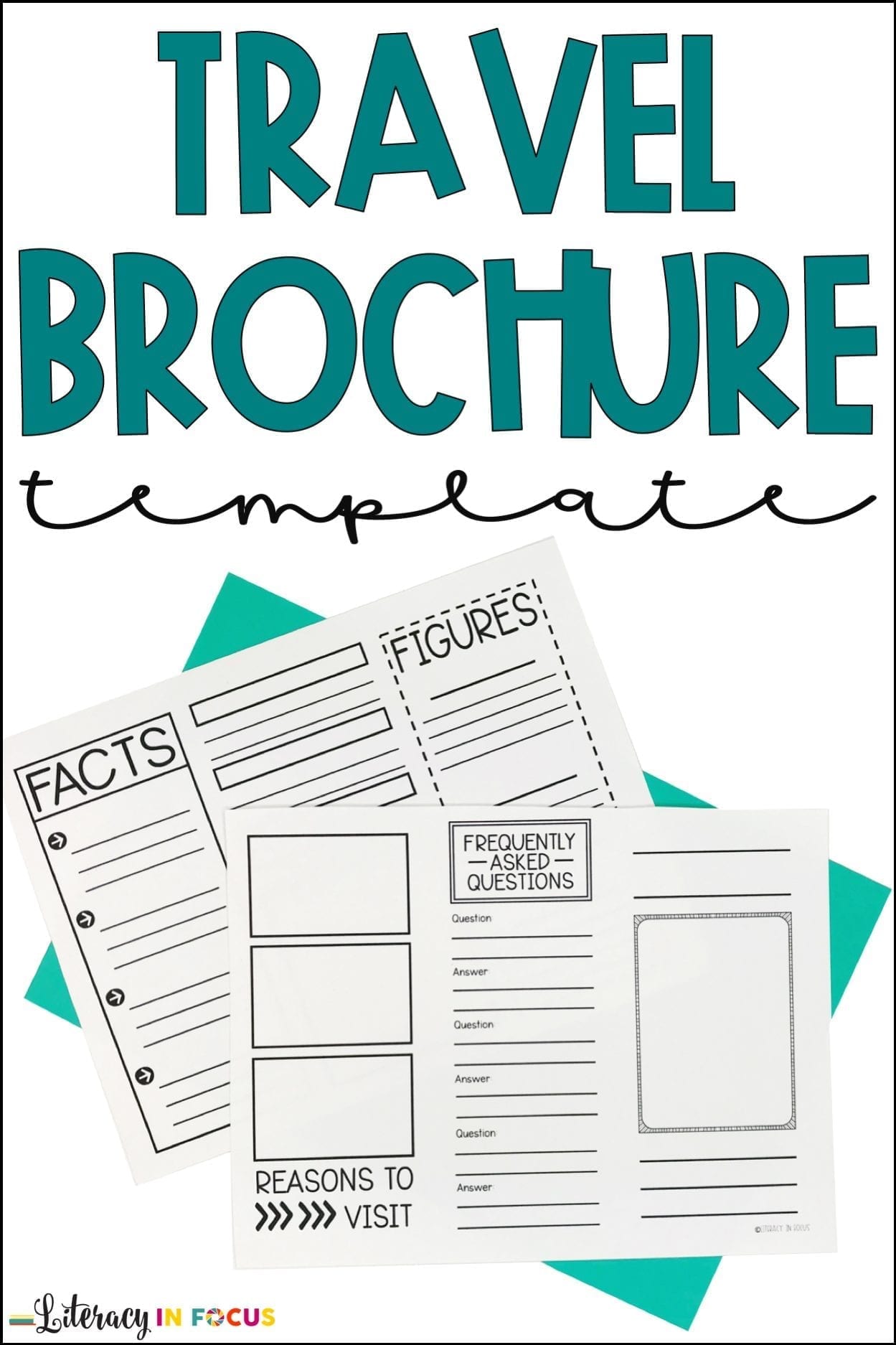
Panel 1: Cover
The brochure cover includes a title, picture, and one sentence convincing readers to travel to that particular region or locale. The cover should be appealing and show creativity. I let students know that the purpose of the cover is to create interest in the location. A catchy title, colorful photo, and inviting sentence are necessary for creating a great cover.
Panel 2: Frequently Asked Questions
Including a Frequently Asked Questions section gets students thinking critically about the historical location. I have students develop three questions based on the historical location. The questions must be open-ended and show a clear understanding of the area being studied. In addition to providing the questions, students also have to provide the answers. Ideally, students will be able to demonstrate a more complex level of analysis as they complete the question and answer process.
Panel 3: Reasons to Visit
Panel three requires students to provide three different reasons to visit the historical location. This section encourages students to think about the positive attributes of the historical location. In terms of higher order thinking skills, including detailed information about three different reasons moves students from comprehension to application. In order to finish the third brochure panel, students must include a picture to represent each reason.
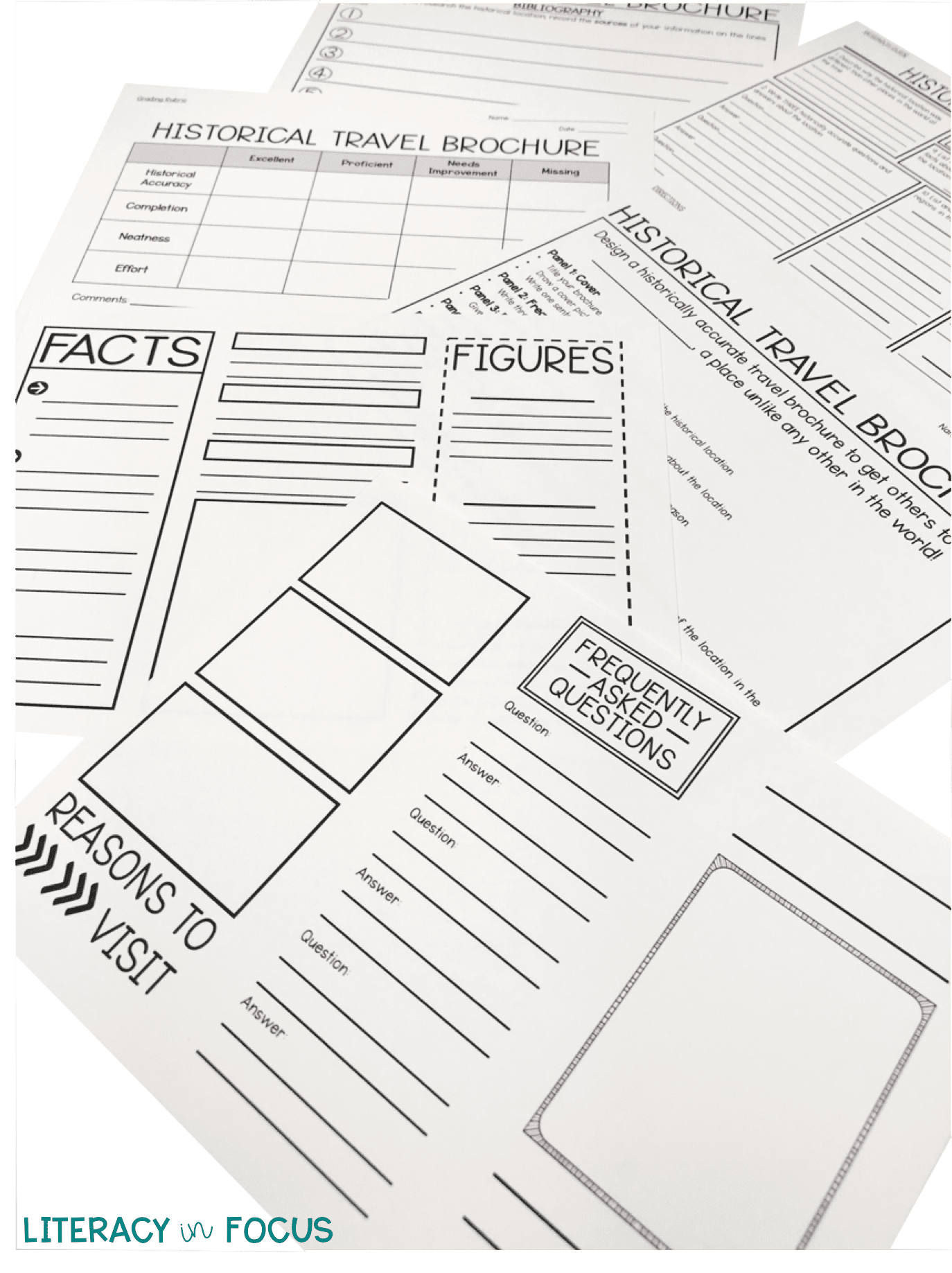
Panel 4: Facts
The next panel requires students to include four historically accurate facts about the location. This section relies on students being able to tell the difference between fact and opinion. Recording facts about the location will encourage students to think critically about the information they are including in their brochure. Additionally, providing historically accurate facts is a great way to review the unit of study and showcase learning.
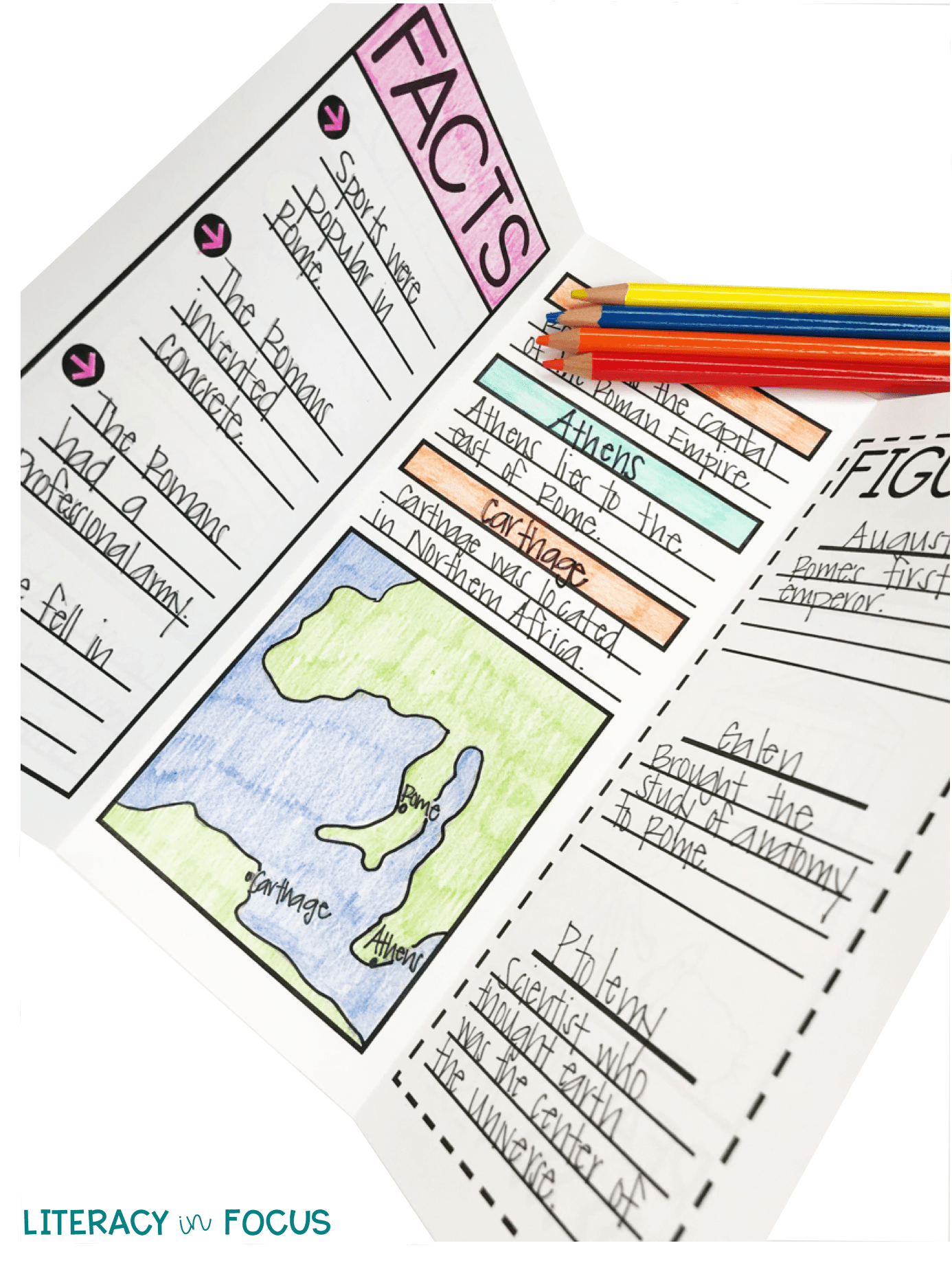
Click here to download the entire project from Literacy in Focus on TpT!
Panel 5: Cities/Regions and Map
Panel five requires students to look closely at the location and generate three cities or regions to highlight. Students must include a brief description of each city or region, followed by a hand-drawn map. The map portion of the brochure is a great way for visual learners to connect with the geography of the location. Incorporating map skills is another way to embrace differentiation and support cross-curricular learning.
Panel 6: Important People
The last panel has students identify three important people related to the historical location. For each person listed, students must state one historically accurate fact. Connecting people to a place of interest broadens the scope of learning. It requires students to think about the historical location in different terms. Ideally, completing the travel brochure in its entirety will provide students with a comprehensive analysis of the historical location and unit of study.
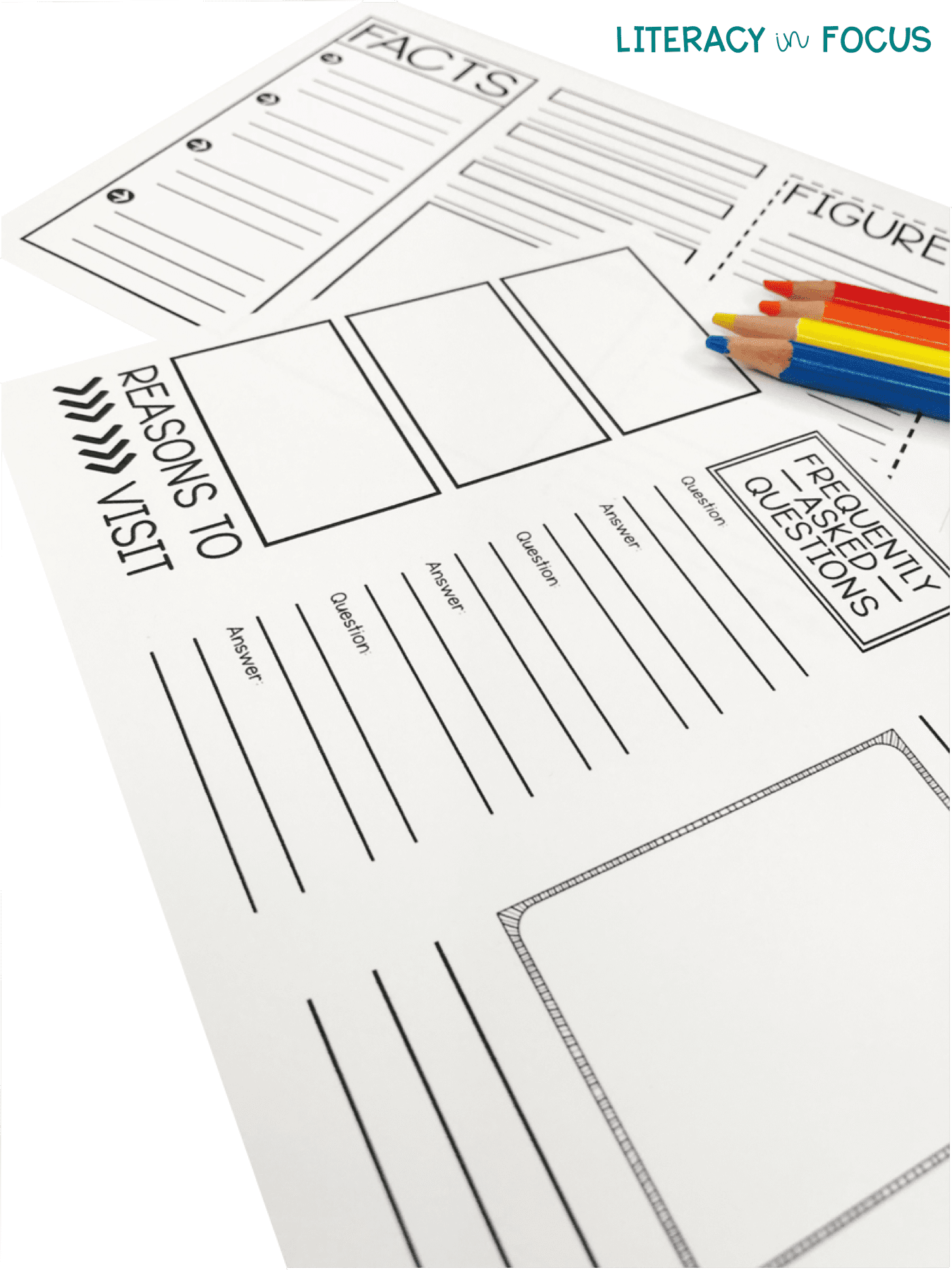
In order for students to create successful final products, I find it helpful to have them begin by completing a research guide that includes all of the necessary information for the travel brochure. The research portion of the assignment is critical for being able to successfully complete the brochure. In addition to the research guide, I provide students with a bibliography worksheet. Having space to record their sources of information is a great way to start teaching students about the importance of using credible sources. It also helps students stay focused and on-task during the research portion of the lesson. Next, before passing out the brochure templates, we read through the complete directions and grading rubric. I want students to completely understand the project expectations before getting started. Finally, students are ready to get to work!
In my opinion, the best part of the historical travel brochure project is that it can be applied to any historical location. Not only that, it will work for many different grade levels and subject areas. Plus, the final products always turn out amazing! Letting students showcase their creativity while addressing research and writing skills is most definitely a win-win situation.
If you are interested in completing the historical travel brochure project with your students, you can download the free template shown below. I also have included a link to the resource in my TpT store that includes the brochure template along with all of the supplemental materials listed above (research guide, student directions, bibliography, and rubric).
Click Below to Download the FREE Travel Brochure Template
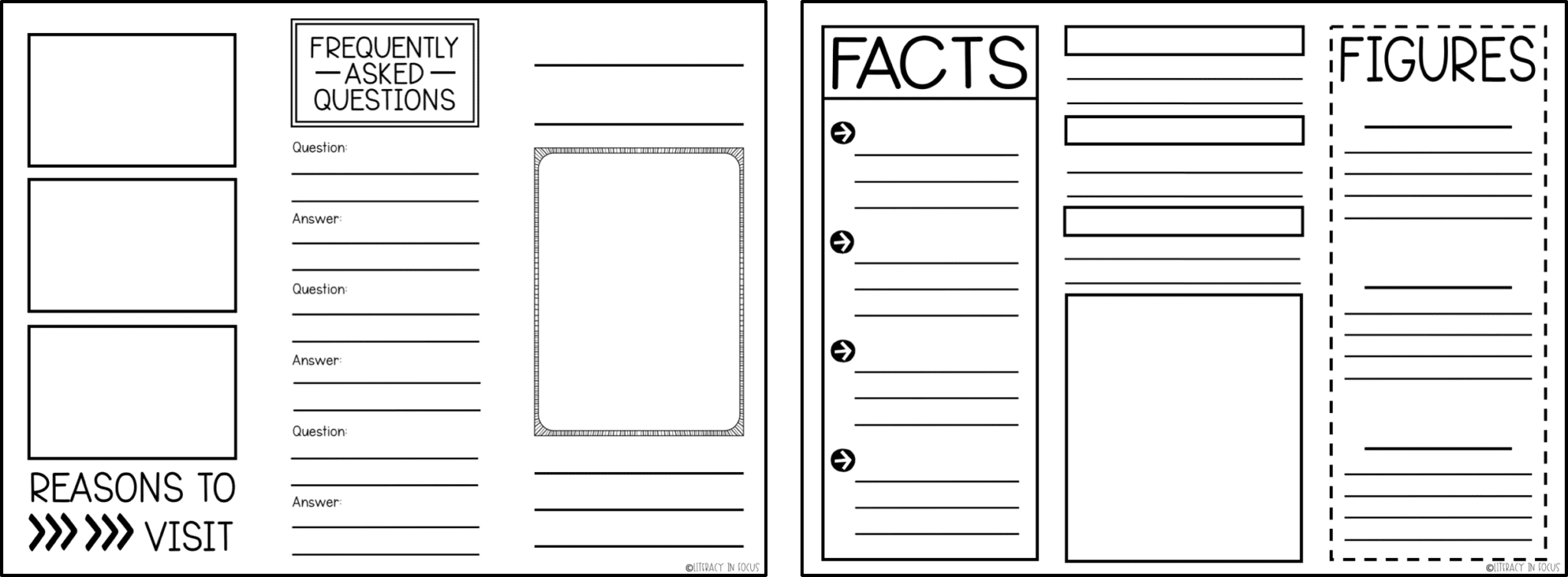
Want the template AND supplemental resources? Click here to visit Literacy in Focus on TpT and download everything you need for a comprehensive historical travel brochure project!
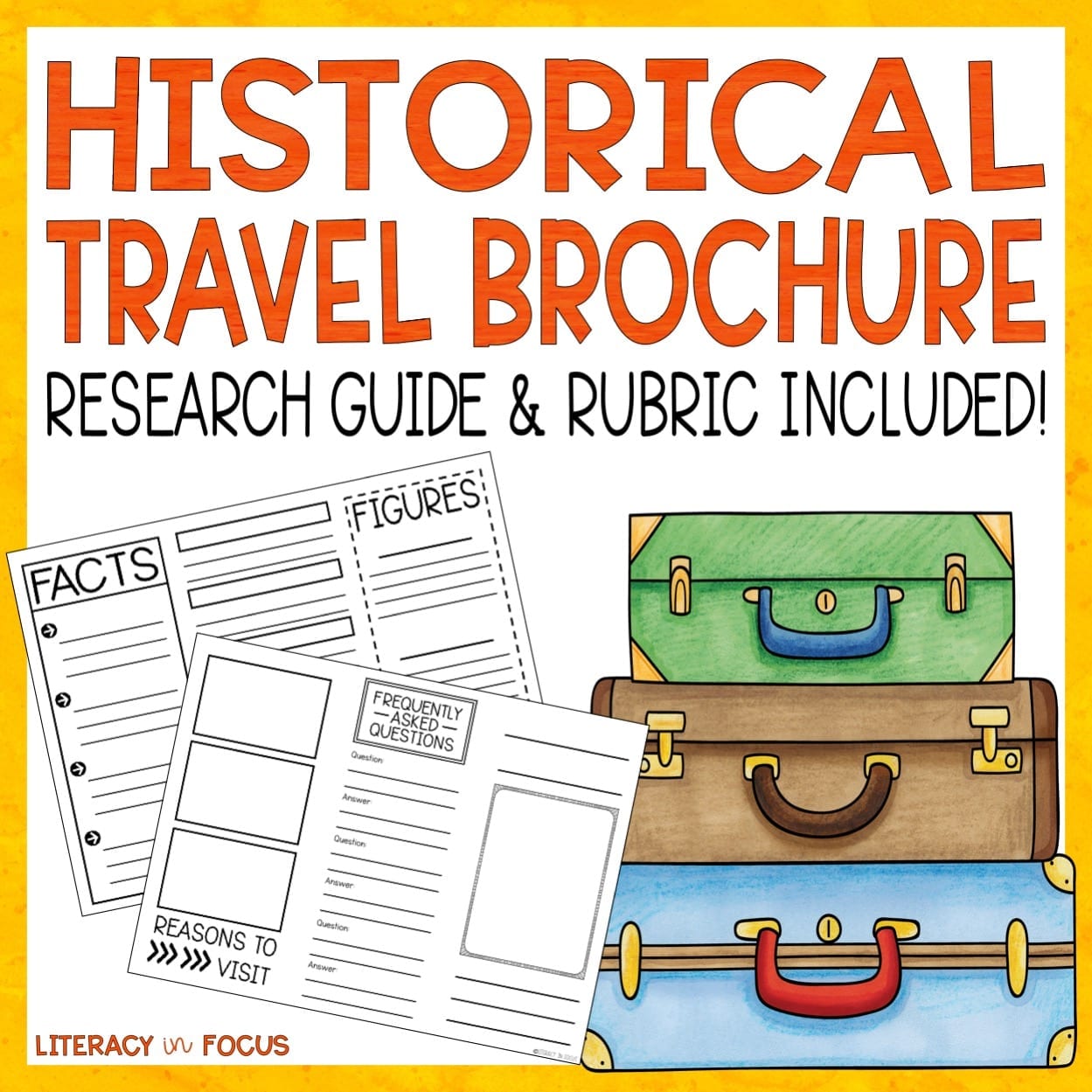
Travel Brochure Template

